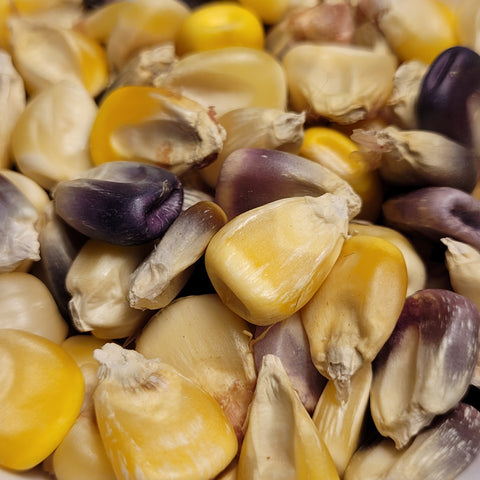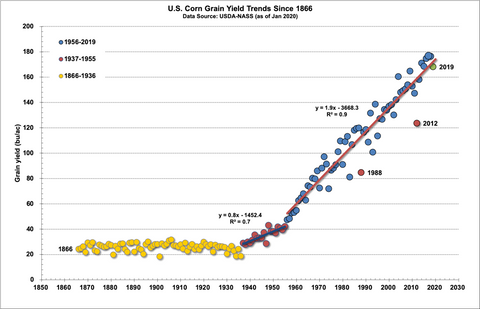
Growing Corn on our Michigan Homestead
Our focus is on historical open pollinated varieties that were selected for the northern edge of the corn belt. Here is major corn growing regions of the US per the USDA:

Corn does grow in Michigan, but we're not famous for it. To grow multiple varieties on our small farm, we will use length of maturity to manage multiple varieties as well as different fields on our farm. Unfortunately, some with similar maturities will have to take turns from year to year.
Days until maturity are certainly just a guideline. The real driver of plant (and insect life) is Growing Degree Days (GDD). It will take me a few years to fine tune the listed 'maturity' of each type relative to the other, but for the moment, here they (have, do and want to grow) are:
DTM Named Variety (DTM is Day to Maturity)
65 Alberta Clipper Corn

70 Gaspe' Flint Corn 
75 New York Red Flint Corn

75 VK RX 2300 Flint Corn

75 New York Bloody Butcher Flint Corn
85 King Phillip Flint Corn

85 Mexican Rose Corn

87 Minnesota 13 Corn

89 Coburn's Early Red Flint Corn

90 Dobranoc Corn

95 Polar Dent Corn

97 Floriani Red Flint Corn
100 Silver King Dent Corn

100 New York Red Robin Dent Corn

100 Black Cherry Parching Corn

105 Amish Dent Corn

105 Reid Yellow Dent Corn

105 Zdrowie Flint Corn

105 New York Amish Mushroom Popcorn

110 1776 Dent Corn

110 Nalo Orange Flint Corn

110 Waimanalo Orange Flint Corn

115 Otto Flint Corn

115 Ozark Gourdseed Corn

115 Ohio Blue Dent Corn

115 Buck Lantz Dent Corn

120 Johnny Dewlen Blue Dent Corn

120 Lancaster Sure Crop
120 Chicken Feed Dent Corn

126 Cocke's Prolific Dent Corn

These need maturities assigned. Aren't they gorgeous!
xxx White Landrace Corn

xxx Winnebago White Flour Corn

xxx Northwestern Dent Corn

xxx Rhode Island Red and White Flint Corn

Integrated Pest Management of University of Missouri had an interesting 3 part series on corn pollination:
The Male Role The Female Role Boy Meets Girl
It goes into the details of the mechanics, methods and perils reproduction without any birds or bees. Corn being monoecious has two unique traits among the grains: each plant has both male & female parts and they physically separated. As a result, corn depends on wind to move its pollen. Our honeybees can be seen gathering pollen from the tassels, but without a nectar treat on the female flower, they never land on the silks.
We do not grow a large enough plot size to be able to estimate yields on a commercial scale. I like this graph from Purdue University on corn yield per acre since 1866:

I like to think of the golden age of open pollinated corn breeding ended by 1940. According to this article on corn breeding hybrids took on an increasing role. Then came cheap chemicals, oil, irrigation and GMO...
So, it appears that one could expect 25 bushels per acre. A bushel of shelled corn weighs 56 pounds, so, about 1400 pounds of shelled corn per acre, or 30 pounds for a 30 ft by 30 ft plot. In my progression of the corn harvest, I calculate what I was harvesting. Much to my surprise (& joy), I've been able to beat these numbers.
Here is an interesting article on making tortillas including the nixtamalization process.